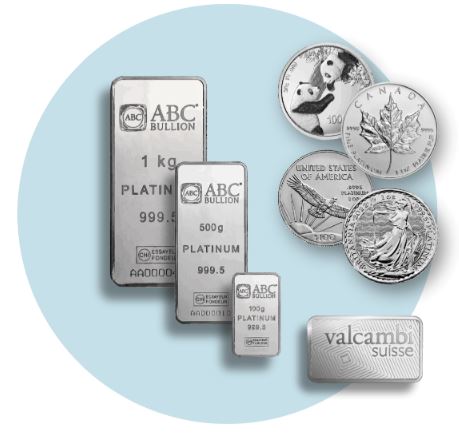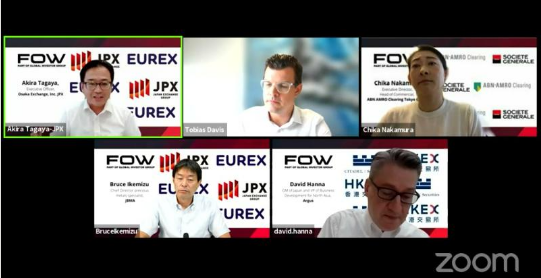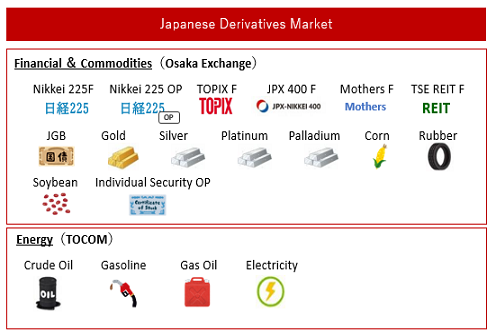OSE Derivatives
How to invest in platinum

Executive Summary
Investors have a broad range of choices to consider when making an investment in platinum, depending upon their individual circumstances, location and preferences. These include: direct ownership of platinum bullion (coins, bars); online/digital bullion accounts with fractional ownership; shares in physically-backed platinum exchange-traded products. Options for those taking positions on the price of platinum but not necessarily requiring physical ownership include futures contracts and other derivatives as well as direct equity investment in companies that mine platinum group metals (PGMs), which brings exposure to company performance and indirectly to all PGM prices plus the other metals they produce.
What is more, as a rare metal with unique properties, in demand as both an industrial and precious metal, platinum is attractive as a long-term store of value. It can form part of a retirement savings plan, in much the same way as shares in a listed company or an exchange traded product, including those that are physically-backed, like gold and platinum ETFs. There can also be tax benefits from holding certain platinum investments, although this varies depending upon jurisdiction and the tax rules applicable to individual investors or trusts. Sales taxes (Value Added Tax) are applicable for physically-delivered platinum bullion in many jurisdictions.
Platinum has strong demand, limited supply and is currently significantly undervalued relative to gold – factors that investors are taking into consideration when looking at types of platinum investment.
Platinum bullion
Platinum bullion is an umbrella term that refers to two types of investment product – bars and coins – that share common characteristics, with guaranteed purity of 99.95 per cent being the key criterion. Both provide a straightforward and widely available way of adding physical platinum investment to a portfolio. Investment in platinum bullion also gives investors reassurance in terms of provenance and quality – especially when those bars and coins purchased are from Sovereign mints such as the US Mint or The Royal Mint in the UK.
Platinum bullion products also offer investors improved liquidity over non-bullion products. They can be bought and sold easily, with value derived from their purity or ‘fineness’ and the prevailing spot market price for platinum, adjusted slightly to include manufacturing costs and supplier margin.
Platinum bullion bars are 99.95 per cent fine and typically made by refineries that meet the stringent ‘Good Delivery’ requirements set out by the London Platinum and Palladium Market (LPPM), the major international trading centre for platinum bullion. They are available in a range of weights, usually per gram or troy ounce, with the option of delivery to door or safekeeping in a specialist vault.
Platinum bullion coins, made from 99.95 per cent fine platinum bullion include the globally-recognised American Eagle and Canadian Maple Leaf. However, mintages of platinum bullion coins are less frequent than their counterparts cast in gold. In fact, prior to 2016, none of the world’s mints had issued a new platinum coin for more than ten years.
Since then, increased awareness of, and appreciation for, platinum has led to the launch of new platinum bullion coins in a series of ‘firsts’ from mints around the globe. For example, The Royal Mint and the Austrian Mint now produce platinum bullion coins: the former as part of its Britannia and Queen’s Beasts collections and the latter through its platinum Vienna Philharmonic series. In 2021, The People’s Bank of China resumed production of the iconic platinum Panda.
Platinum ‘proof’ coins are also available to investors and their value, in addition to their fineness and the spot price of platinum, can include a collectors’ premium. These coins have a numismatic value to collectors – often specialists – who are attracted by specific characteristics such as design, rarity and history.
The term ‘proof’ refers to the way a coin is produced and finished in a special minting process that results in a highly-polished, mirror-like background with raised elements displaying a frosted appearance.
Bullion coins, and some proof coins, from mints can be ‘legal tender’, which confers further authenticity and can have tax advantages in certain countries. As a result, they carry a face value which is significantly below the coins’ actual market value. For example, US American Eagles have a face value of US$50 and US$100 for gold and platinum coins respectively.
Although technically legal tender, platinum bullion coins (and, where relevant, proof coins) are not used in general circulation, because their issue price and/or their melt value at the time of issue is significantly above the arbitrary legal tender value placed on them.
As well as the accessibility and liquidity they offer, investing in platinum bullion in the form of bars and coins can be attractive to investors as it carries no credit or counterparty risk, unlike stocks or bonds. In some jurisdictions, for example the US, platinum bullion can be directly included as an asset in an Individual Retirement Plan.
Online investment
Online bullion accounts enable investors to purchase, store and sell physical platinum bullion via a trading platform. Investors can buy, store and sell physical platinum through the relevant platform in a secure and cost-effective way at any time of the day or night in multiple currencies, and often on a fractional basis – meaning that investors can own bullion in weights down to 1 gramme.
Exchange traded funds
An Exchange Traded Fund (ETF) tracks the price of a commodity (or other type of financial asset). ETFs are listed entities that issue shares which can be traded on an exchange, meaning that prices can vary throughout the day. Investors can buy and sell shares in a platinum ETF, either directly from the stock exchange it is listed on or through a broker, with a minimum investment of just one share.
With a physically-backed platinum ETF, investors know that the value of their shares is 100 per cent matched by physical platinum in the form of investment bars. These platinum bars, held in a highly secure vault, are the only assets of the fund and reflect the platinum price, less fees – which are typically well below one percent per annum. This type of asset allows an individual or asset manager to invest in physical platinum without incurring additional costs, such as insurance premiums and storage.
Where buyers of a platinum ETF exceed sellers, new ETF shares are issued. In this instance, the fund typically has three days to purchase platinum bars in the spot or ‘over the counter’ market and deliver them into the vault, which is usually at a large commercial bank, in order to ensure the fund’s holdings of physical platinum reflect its shareholdings.
The traded value of an ETF share tracks the spot platinum price. As a result, an ETF investor can make money when the platinum price rises and lose money when it falls, in the same way that anyone who owns platinum in its physical form can.
Only some ETFs provide investors with the choice of converting their share into physical metal. Where this is possible, the investor is entitled to the portion of the vaulted platinum that equates to the underlying shareholding, and not a specific bar or bars.
Investing in a platinum ETF can be a convenient way to add platinum to a portfolio. In the UK, the US and Japan, platinum ETFs can be held as part of self-managed pension schemes, with possible associated tax benefits.
Platinum Accumulation Plans
Long-established in Japan, Platinum Accumulation Plans (PAPs) enable individuals to pay a monthly amount into an account in order to purchase platinum, in many instances a core part of retirement savings.
Retail investors in Japan have been investing in precious metals for decades, with the purchase of kilogram and smaller platinum ingots produced by Japanese precious metals refiners and, more latterly, through exchange traded funds.
With a PAP, the balance of physically-owned platinum accrues each month, although they are free at any time to sell all or part of their balance, or withdraw it in the form of bullion, coins or jewellery.
Futures
Platinum futures are financial products that allow participants, including individuals as well as institutions and businesses, to lock in a future platinum price by entering into a binding contract that commits them to buying an amount of platinum at a fixed price at a future date. Investors can then either hold the position until its expiry date or – depending upon their view of the market – close the position before expiry, potentially allowing them to make a profit, subject to market movements. Precious metals futures can be traded on various exchanges, including JPX Group.
The futures market works by matching investors prepared to take on risk (with a view to generating a return based on price fluctuations) with other traders who are looking to avoid risk by having certainty over future prices, for example to manage supply chain costs, so avoiding volatility.
Unlike other types of investment in platinum such as exchange traded funds, futures are not physically backed. However, platinum futures contracts do allow for the delivery of physical platinum, although in practice only a low single digit percentage of futures contracts result in the delivery of a physical commodity. The principle of physical delivery helps to ensure that there is convergence in pricing between the physical market and the futures market upon maturity of the futures contract.
Futures enable traders to take a view on the future price of platinum, either to make a profit by potentially benefiting from price fluctuations or to protect themselves against price fluctuations. Similar objectives can be achieved through other instruments, such as options, swaps, forwards or contracts based on the difference between two prices. Some of these products may not be regulated by an exchange.
However, many investors choose to trade on a futures market for several reasons, including price transparency and deep liquidity. Furthermore, futures exchanges can be fully electronic, operating in real time and able to execute millions of trades per second. They can also provide secure clearing services, giving investors further peace of mind regarding settlement and mitigating counterparty risk.
Platinum mining stocks and shares
Exposure to platinum can also be achieved by investing in platinum mining stocks and shares. This gives investors the ability to invest in companies that produce platinum rather than investing in the physical metal itself.
The research for the period since 2019 attributed to Metals Focus in the publication is © Metals Focus Copyright reserved. All copyright and other intellectual property rights in the data and commentary contained in this report and attributed to Metals Focus, remain the property of Metals Focus, one of our third-party content providers, and no person other than Metals Focus shall be entitled to register any intellectual property rights in that information, or data herein. The analysis, data and other information attributed to Metals Focus reflect Metals Focus’ judgment as of the date of the document and are subject to change without notice. No part of the Metals Focus data or commentary shall be used for the specific purpose of accessing capital markets (fundraising) without the written permission of Metals Focus.
The research for the period prior to 2019 attributed to SFA in the publication is © SFA Copyright reserved.
This publication is not, and should not be construed to be, an offer to sell or a solicitation of an offer to buy any security. With this publication, neither the publisher nor its content providers intend to transmit any order for, arrange for, advise on, act as agent in relation to, or otherwise facilitate any transaction involving securities or commodities regardless of whether such are otherwise referenced in it. This publication is not intended to provide tax, legal, or investment advice and nothing in it should be construed as a recommendation to buy, sell, or hold any investment or security or to engage in any investment strategy or transaction. Neither the publisher nor its content providers are, or purports to be, a broker-dealer, a registered investment advisor, or otherwise registered under the laws of the United States or the United Kingdom, including under the Financial Services and Markets Act 2000 or Senior Managers and Certifications Regime or by the Financial Conduct Authority.
This publication is not, and should not be construed to be, personalized investment advice directed to or appropriate for any particular investor. Any investment should be made only after consulting a professional investment advisor. You are solely responsible for determining whether any investment, investment strategy, security or related transaction is appropriate for you based on your investment objectives, financial circumstances, and risk tolerance. You should consult your business, legal, tax or accounting advisors regarding your specific business, legal or tax situation or circumstances.
The information on which this publication is based is believed to be reliable. Nevertheless, neither the publisher nor its content providers can guarantee the accuracy or completeness of the information. This publication contains forward-looking statements, including statements regarding expected continual growth of the industry. The publisher and Metals Focus note that statements contained in the publication that look forward in time, which include everything other than historical information, involve risks and uncertainties that may affect actual results and neither the publisher nor its content providers accept any liability whatsoever for any loss or damage suffered by any person in reliance on the information in the publication.
The logos, services marks and trademarks of the World Platinum Investment Council are owned exclusively by it. All other trademarks used in this publication are the property of their respective trademark holders. The publisher is not affiliated, connected, or associated with, and is not sponsored, approved, or originated by, the trademark holders unless otherwise stated. No claim is made by the publisher to any rights in any third-party trademarks.
© 2024 World Platinum Investment Council Limited. All rights reserved. The World Platinum Investment Council name and logo and WPIC are registered trademarks of World Platinum Investment Council Limited. No part of this report may be reproduced or distributed in any manner without attribution to the publisher, The World Platinum Investment Council, and the authors.
Related links
World Platinum Investment Council - WPIC®

World Platinum Investment Council - WPIC®







